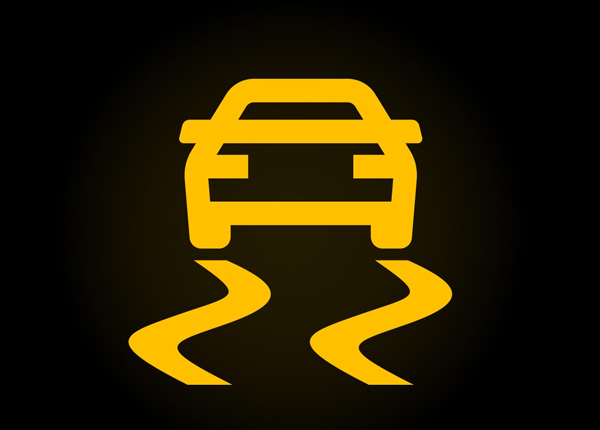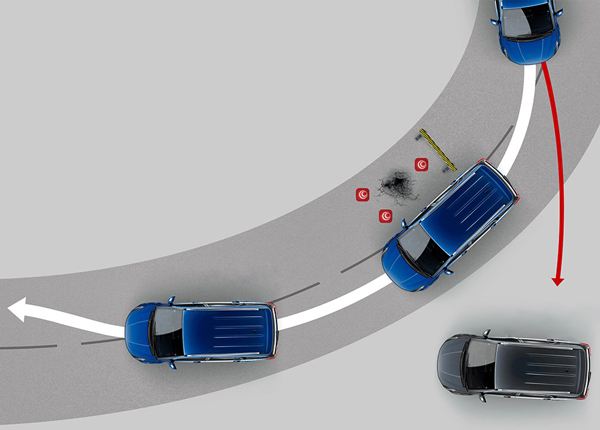
Friction, Traction and Rolling Resistance: What's Keeping You On The Road
Updated Dec. 25, 2020Let’s talk about the forces at work between your vehicle and the surface of the road you are driving on. Understanding how your tires interact with the road’s surface is important, as your ability to accelerate, slow down or perform any maneuver depends on maintaining “grip” on the pavement beneath your wheels. The knowledge covered here will also help you to avoid dangerous tire malfunctions like tread separation and blowouts.
Friction
When two surfaces are in contact and move against each other (or one moves against the other), they will encounter resistance. This is known as friction. The strength of friction largely depends on the material of the two contacting surfaces and the amount of pressure being applied. When friction is too great, the surfaces may not be able to move across each other at all. In contrast, minimal friction usually means two objects can slide against each other easily. Here are some real-world examples:
- 1

Bowling alleys.
A bowling ball can roll smoothly down a lane, often sliding or turning over as it goes, as the surface of the lane has been polished to reduce friction. - 2

Athletic shoes.
Most sneakers and shoes designed for sporting activities have rubber friction-enhancing soles to help you stop, change direction and increase speed quickly. - 3

Driving gloves.
Gloves designed to be worn while you’re driving often have friction-enhancing material on the palms and finger pads, to improve your grip on the steering wheel.
Friction plays an essential role in every driving maneuver you make. This resisting force prevents your tires from simply sliding across the surface of the roadway, allowing them to grip and roll over the tarmac instead. Thanks to friction, you can stop, start, move and turn your vehicle. Friction exists between your wheels and the brakes just as it does between the tires and the surface of the road. Without friction, the brakes would not be able to grip and slow your wheels and you would have to wait for the car to stop on its own.
Resistance
We have talked about friction as a form of resistance, but what does “resistance” really mean? Resistance describes any force which fights against the movement of an object. The balance between the energy an object has and the resistance due to friction or inertia working against it, will determine whether that object moves. If there is too much friction, the object will slow down, stop or remain stationary.
Resistance is also necessary to overcome inertia and change an object’s speed or direction. Your car moves forward because its tires press into the road’s surface AND are resisted by friction. The vehicle will not begin to move until the resisting force overpowers inertia.
Traction
The specific type of friction that exists between your vehicle’s tires and the road’s surface is called traction. Traction results from the weight of the car pressing the tires against the surface of the road. As discussed above, traction is necessary in order to stop, slow down, accelerate and change direction. Without traction, your wheels may skid across the roadway. Maintaining good traction while driving is imperative, as losing traction could mean you lose control of your vehicle.
Traction is affected by several factors:
- The weight of your vehicle. Heavier vehicles offer greater traction as they push into the road surface with more force.
- The speed at which you are traveling. As your speed increases the vehicle exerts less pressure on the road and traction decreases.
- The condition of your tires. Heavily worn tires become smooth and offer less traction.
- The condition of the road surface. Water, snow, ice, mud, chemicals and loose gravel can all reduce your tire's grip on the road.
The fastest way to increase traction is to reduce your speed. If you notice your tires are slipping, slow down immediately. Be careful not to panic and slam on the brakes, as this will likely cause your wheels to lock and create the skid you were trying to avoid. Instead, use control and apply the brakes gradually. If you do begin to skid and are driving a manual transmission, shift into a lower gear.
Rolling resistance
Rolling resistance is another force that affects your vehicle’s tires while the car is in motion. As the car moves, your tires are compressed by the weight of the vehicle pressing down on them. This compression will affect different parts of the tire as they connect with the road’s surface while the wheel rolls, changing the shape of the tire. This results in a cyclical process of deformation and recovery (being pressed out of shape and then returning to the original shape).
As this occurs, some of the vehicle’s kinetic energy is transferred into the tires and converted to heat. The deformation and recovery cycle also produces heat. The more the tires are deformed and forced to recover, the more heat is created. Heat dissipates naturally from your car’s tires into the road’s surface but if too much heat is produced, the tire could blow out. Keeping your tire pressure topped up in accordance with the manufacturer’s guidelines should prevent excessive deformation and stop your tire from overheating.




